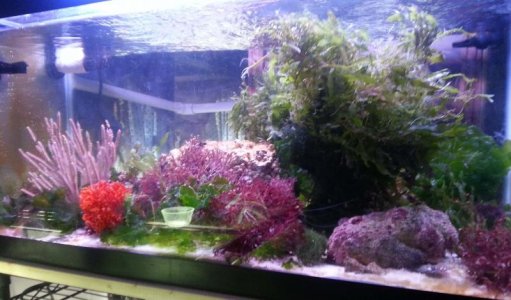Gandolfe
New member
My male seahorse had bubbles under his skin around his eyes. He seems to be eating still and has had them for over 2 weeks and he still gets around tank fine. Any suggestions as to what I can do to help him? I don't want to use the needle thing to pop them! It seems like to much stress even though I have bought very small needles and used them once but they came back. I didn't feel comfortable popping the bubbles and medication where he has to ingest it is pretty much out of the question. the female id fine with no signs. I can't see where the tank is getting any micro bubbles. Any advice would be most appreciated. They are in a 40 gallon breeder with a full load of macro algae. the algae has doubled since in the pic

